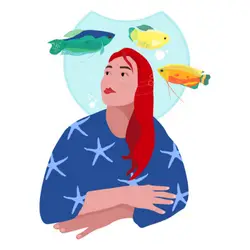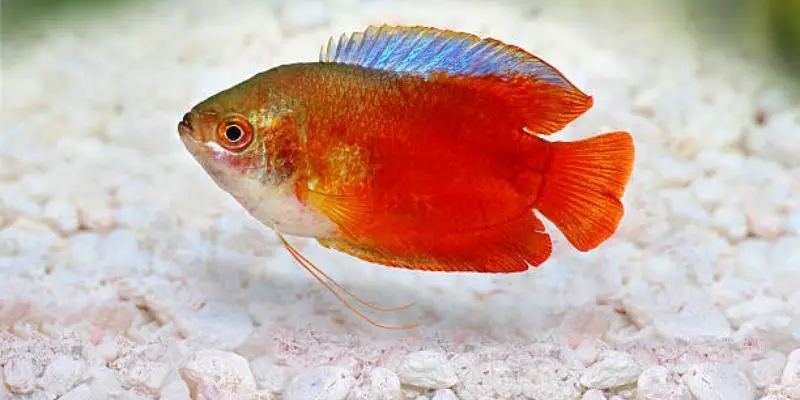Dwarf gouramis are peaceful, schooling fish that make good community tank inhabitants. They come in a variety of colors, so they are a popular choice for fishkeepers. Here we’ll take a closer look at the care and keeping of this species of fish.
Dwarf Gourami Tank Requirements
As with most fish, the ideal tank for gouramis is at least 20 gallons, and much larger would be preferable. A minimum of 10 gallons can suffice if you keep one or two dwarf gouramis, but otherwise go as large as your budget and space allow. Many people like to keep a school of 4 – 6 gouramis in a 20-gallon tank.
Dwarf Gourami Water Requirements
Dwarf gouramis come from Asia and Africa, so the water conditions they prefer are tropical aquatic conditions with high temperatures and strong currents. Hard water is preferred, around 150 ppm (14 dGH) with a pH of 6.5 – 8.0 ideal for these fish.
A heater is necessary to maintain stable water temperatures between 75°F and 84°F (24 – 29˚C). They will appreciate the presence of some decorations in their tank, as this will help break the current a bit. Some driftwood or a few floating plants, such as java fern, can go a long way toward making them feel more at home.
Dwarf Gourami Tank Mates
In general, it’s best to keep dwarf gouramis with other peaceful fish that enjoy similar water conditions and that are not likely to nip the fins of your gouramis. Good tankmates include other species of gourami, many types of tetra, and a variety of peaceful barbs.
Dwarf Gourami Feeding
In the wild, dwarf gouramis feed on worms, crustaceans, insects and other invertebrates, so they should be offered a variety of live and frozen foods. They will readily accept most prepared flake and pellet foods, as well as freeze-dried bloodworms and tubifex, brine shrimp and other such treats.
Dwarf Gourami Diseases
Like all fish, dwarf gouramis are susceptible to a variety of bacterial and fungal diseases, as well as parasites. To proactively prevent disease, the best approach is to give your dwarf gouramis a stress-free environment with optimum water conditions and a nutritious diet. Dwarf gouramis often fall victim to velvet disease, especially when stressed by poor water quality or other issues.
Dwarf Gourami Breeding
Many aquarists enjoy breeding dwarf gouramis to keep the fry and watch them grow. Dwarf gouramis are relatively easy to breed, as they do it on a regular basis in the wild. The male builds a bubble nest for his eggs, and he will protect them and defend them against any threats.
Dwarf Gourami Types
There are more than 15 different types of dwarf gourami, distinguished by their coloration and patterns. Dwarf gouramis come in a variety of colors, including red, blue and yellow and white and black.
They also come with different patterns ranging from spots to stripes and reticulated patterns. Some varieties include the flame dwarf gourami, flowerhorn gourami, Boeseman’s fire-bellied gourami and pearlscale gold gourami.
Dwarf Gourami Size
Depending on the variety, a dwarf gourami can grow from 2 – 4 inches (5.0 – 10.0 cm), so you’ll need at least a 20-gallon tank for one or two fish and at least 30 gallons for a group of four to six. Dwarf gouramis can live 8 – 10 years if given proper care.
Conclusion
Dwarf gouramis are peaceful species of fish that make good community tank inhabitants. If you’re looking for a colorful, interesting addition to your aquarium, this is a perfect choice! These fish come in many different colors and patterns so they will add some personality to any tank.
They also have great personalities too – these fish love being around other dwarf gouramis or more aggressive sorority sisters like guppies or neons. With care and keeping tips from us at Aquarium Co-Op, we hope your new “gourmands” thrive in their new home!

